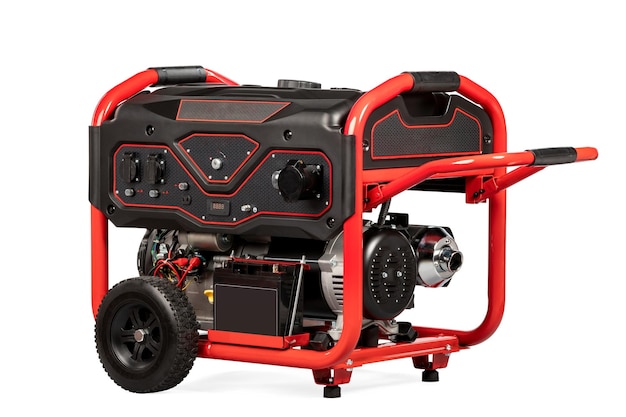Eco-Friendly Electric Generators Powered by the Community
Eco-friendly electric generators are revolutionizing the way we think about power generation, promoting sustainability, and fostering community engagement. This article explores the concept of community-powered eco-friendly electric generators, their benefits, implementation, and real-world examples.

1. Introduction to Eco-Friendly Electric Generators
1.1 What Are Eco-Friendly Electric Generators?
Define eco-friendly electric generators and explain their importance in reducing carbon footprints and promoting sustainable energy solutions.
1.2 Community-Powered Generators: An Overview
Introduce the concept of community-powered electric generators, emphasizing the role of local communities in energy production and management.
2. Benefits of Community-Powered Generators
2.1 Environmental Benefits
Discuss how eco-friendly electric generators reduce greenhouse gas emissions, minimize pollution, and contribute to a cleaner environment.
2.2 Economic Advantages
Highlight the economic benefits, such as cost savings on energy bills, potential for local job creation, and financial incentives for sustainable energy projects.
2.3 Social Impact
Explain the social benefits, including increased energy independence, community resilience, and the fostering of local collaboration and innovation.
3. Types of Eco-Friendly Electric Generators
3.1 Solar-Powered Generators
Describe solar-powered generators, their efficiency, and how communities can harness solar energy through collective efforts.
3.2 Wind-Powered Generators
Discuss wind-powered generators, including small-scale wind turbines suitable for community use and their role in sustainable energy generation.
3.3 Bioenergy Generators
Explain bioenergy generators, which convert organic materials into electricity, and how communities can utilize local biomass resources.
3.4 Hybrid Systems
Introduce hybrid systems that combine multiple renewable energy sources, enhancing reliability and efficiency in community-powered projects.
4. Implementing Community-Powered Generators
4.1 Community Involvement and Planning
Detail the steps involved in planning and implementing community-powered generator projects, emphasizing the importance of community involvement and stakeholder engagement.
4.2 Funding and Resources
Discuss various funding options, grants, and resources available for community-powered generator projects, including government incentives and crowdfunding.
4.3 Technical Considerations
Provide an overview of technical considerations, such as site selection, installation, maintenance, and grid integration.
5. Case Studies and Real-World Examples
5.1 Solar Power in Totnes, UK
Explore the Totnes Renewable Energy Society (TRESOC) project, where the community invested in solar panels to generate local power.
5.2 Wind Power in Feldheim, Germany
Highlight the village of Feldheim, which achieved energy self-sufficiency through community-owned wind turbines and biogas plants.
5.3 Bioenergy in Samsø, Denmark
Discuss how the island of Samsø utilized community collaboration to become carbon-neutral, leveraging bioenergy and other renewable sources.
6. Overcoming Challenges
6.1 Financial Barriers
Identify common financial barriers and offer solutions for communities to overcome these challenges through innovative funding and partnerships.
6.2 Technical Hurdles
Discuss potential technical challenges, such as grid integration and maintenance, and how to address them with proper planning and expertise.
6.3 Community Engagement
Explain strategies to maintain high levels of community engagement and participation, ensuring long-term success and sustainability.
7. The Future of Community-Powered Generators
7.1 Technological Advancements
Explore upcoming technological advancements that could further enhance the efficiency and feasibility of community-powered generators.
7.2 Policy and Regulation
Discuss potential changes in policy and regulation that could support the growth of community-powered renewable energy projects.
7.3 Expanding the Model
Consider how the model of community-powered generators can be expanded to more regions and communities, promoting global sustainability.
8. Conclusion
8.1 Recap of Key Points
Summarize the main points discussed in the article, emphasizing the benefits and potential of community-powered eco-friendly electric generators.
8.2 Final Thoughts
Encourage readers to explore and support community-powered renewable energy projects, contributing to a sustainable and resilient future.
Community-powered eco-friendly electric generators offer a promising solution to global energy challenges, promoting sustainability, economic benefits, and social cohesion. By embracing these innovative systems, communities can play a pivotal role in the transition to cleaner and more sustainable energy sources.




